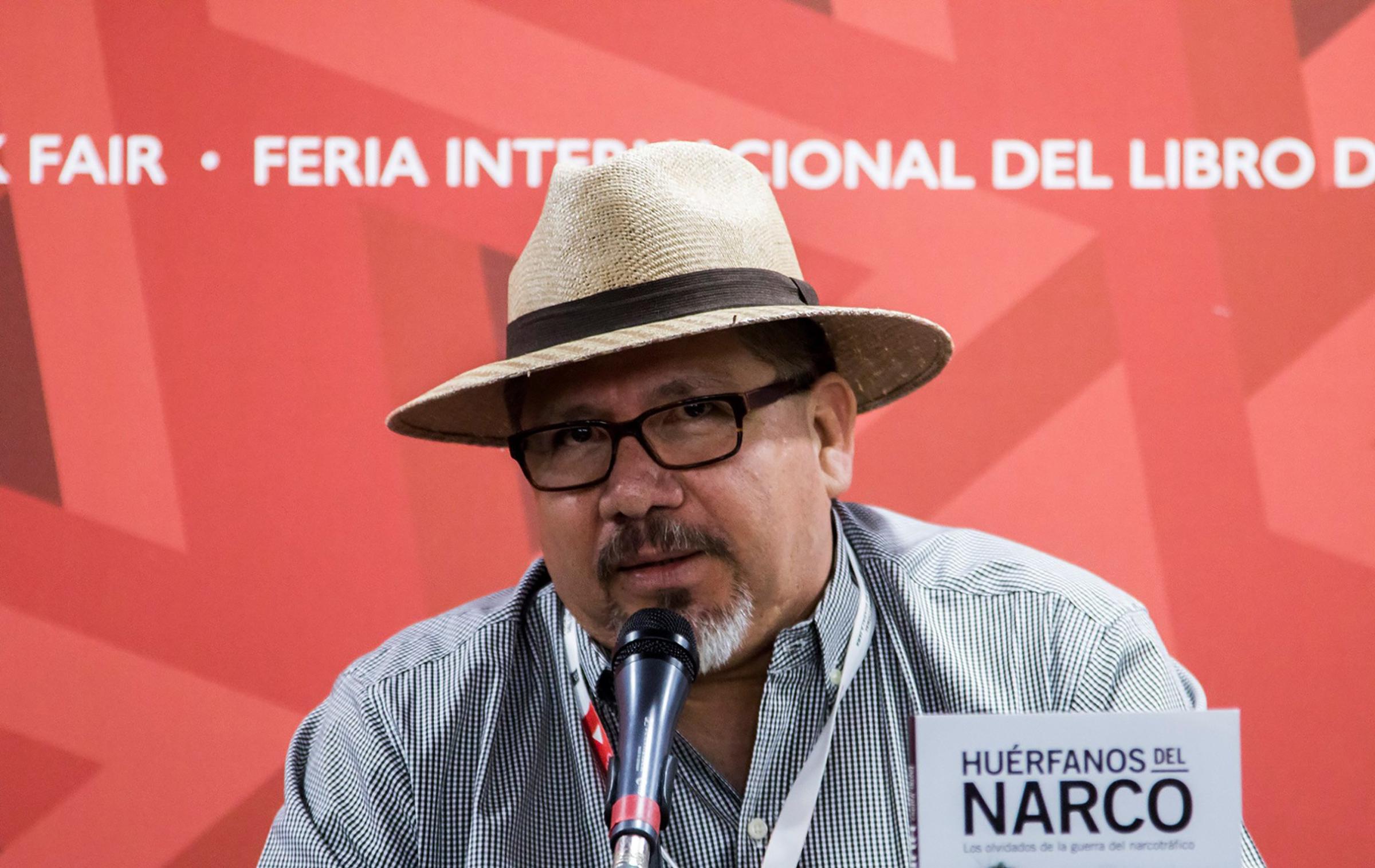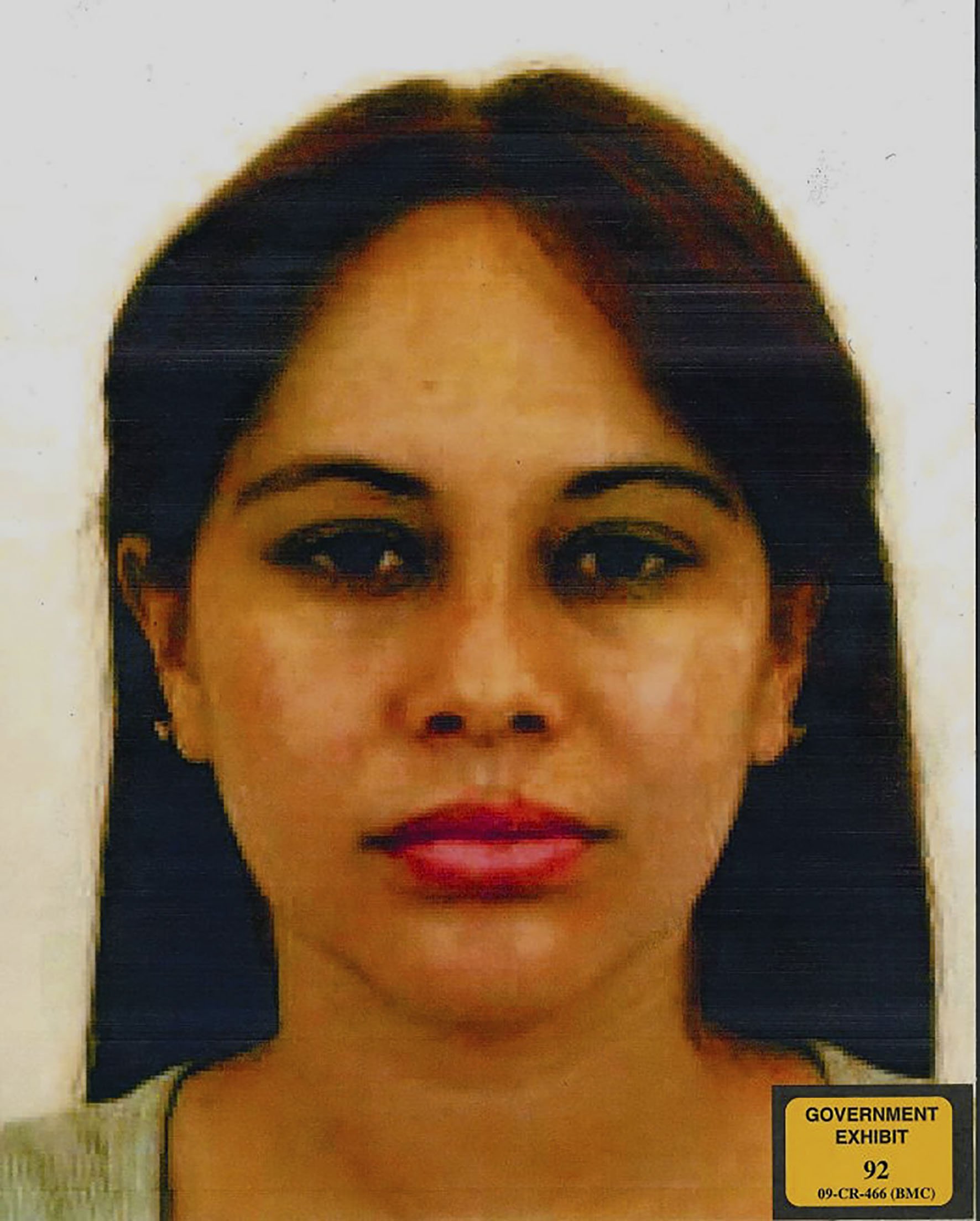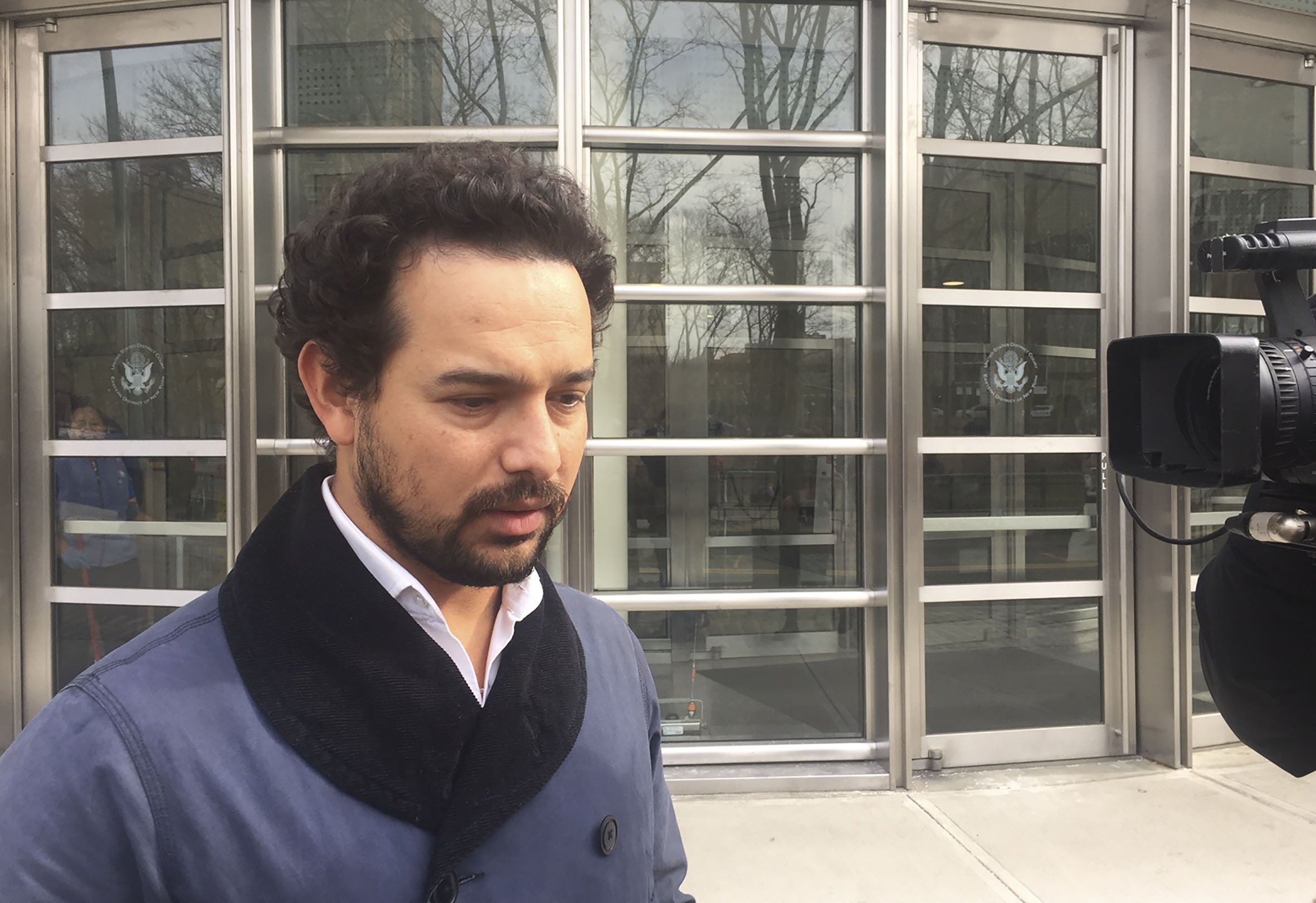The dramatic drug-trafficking trial of Joaquin “El Chapo” Guzman had all the hallmarks of a television soap opera.
Revealing text messages painted the 61-year-old notorious kingpin as a prolific philanderer. Stunning testimonies exposed the widespread government corruption in Mexico, implicating some of the country’s top ex-leaders. And in time for the last few witnesses to be called, there was even a surprise celebrity guest appearance by Alejandro Edda, who portrays Guzman in Netflix’s Narcos: Mexico.
When a jury found Guzman guilty on all charges on Feb. 12, following 34 hours of deliberation, Guzman remained mostly stoic and motionless until it was time for him to be escorted out of the courtroom. Before leaving, he glanced at his wife, who nodded at him and flashed him a thumbs up.
Guzman was sentenced to life in prison plus 30 years on July 17. He was also ordered to give up $12.6 billion in what the government said were ill-gotten gains.
At the sentencing hearing, the drug lord told Judge Brian Cogan the he was not given a fair trial.
“My case was stained and you denied me a fair trial when the whole world was watching,” Guzman said in court, according to the Associated Press. “When I was extradited to the United States, I expected to have a fair trial, but what happened was exactly the opposite.”
Federal prosecutors in Brooklyn had put more than 55 witnesses on the stand since the trial began in mid-November to prove Guzman was guilty of trafficking billions of dollars worth of drugs into the U.S. as the leader of the Sinaloa cartel. His defense team said Guzman was being framed by the cooperating witnesses—a cast of admitted drug traffickers who have struck deals with the federal government.
Guzman is perhaps most famous for bolting from two top-security Mexican prisons. By the time he escaped for the second time—using a mile-long tunnel in 2015—he had already become one of the most lucrative and dangerous drug kingpins in the world. In 2016, Guzman was recaptured in Mexico. He was extradited to stand trial in the U.S. the next year.
As one of the biggest narcotics cases in U.S. criminal history has come to a close, here are the seven biggest revelations that have emerged.

El Chapo’s multibillion-dollar empire was undone by an IT guy
In one of the most shocking testimonies of the trial, Christian Rodriguez, a 32-year-old I.T. specialist from Colombia, revealed to the jury how he built a secret communication network for Guzman—but then gave U.S. authorities key access to it in a betrayal that led to the fugitive’s capture and downfall.
Rodriguez said Guzmán tapped the computer guru in 2008 to create a one-of-a-kind encrypted network that would enable him to run his enterprise and communicate with his inner circle in secret, the Associated Press reported. Rodriguez delivered. He also installed, by request, spy software on dozens of devices belonging to Guzman’s wife and mistresses. “He called me all the time to ask me things regarding spy software,” Rodriguez said in court, according to the AP.
But in 2012, when confronted by the FBI, Rodriguez reportedly turned on the crime boss. From the U.S., where he was moved for safety and paid for his cooperation, Rodriguez helped authorities crack the complex encrypted system he had built and managed, the AP reported. Prosecutors are now using the intercepted messages from the system as evidence of Guzman’s alleged drug trafficking activities.
For Rodriguez, flipping on one of the most dangerous and feared crime bosses in the world was not an easy feat—and not one without consequences. Since becoming an FBI informant, Rodriguez said he has suffered at least two serious mental breakdowns from stress and even needed to undergo electro-convulsive therapy, court documents show.
Cyber security experts, who were not part of Guzman’s trial, told TIME the revelation exposed a serious vulnerability in encryption systems, which major criminal organizations across the globe heavily rely on. Sometimes they add “such a complexity to their enterprise that it winds up being the nail in their coffin,” said Adam Wandt, a John Jay College of Criminal Justice assistant professor who specializes in cyber security.
“In the act of trying to secure yourself, you actually wind up destroying yourself,” Wandt said. “And that’s what happened here.”
The case also highlights the lengths federal investigators had to go to in their pursuit of a tech-savvy criminal mastermind. “It’s sort of the modern day equivalent of how you bring down Capone,” said Michael Daniel, president and CEO of the Cyber Threat Alliance, in reference to the famous Chicago crime boss. (Daniel previously led President Barack Obama’s national and international cybersecurity team.)
He bragged about a $100 million bribe for an ex-Mexican president
The cartel’s corruption seeped through the highest levels of the Mexican government and its police force, multiple witnesses have testified. One of the most damning allegations to emerge from the trial is the claim that Guzman paid former Mexican President Enrique Peña Nieto $100 million to stop looking for him while he was on the lam. The revelation came from Alexander Cifuentes, a former cartel member who used to be Guzman’s most trusted secretary. (On his last day at the witness stand, Cifuentes described his role as Guzman’s “left and right hand man.”)
Cifuentes said Peña Nieto first wanted $250 million from Guzmán if he agreed to stop hunting the most wanted man in the country, the New York Times reported. Guzmán offered $100 million instead, which Cifuentes said Peña Nieto took, according to the Times.
In response to Cifuentes’ testimony, Peña Nieto’s former chief of staff, Francisco Guzman, tweeted that the claims were “false, defamatory and absurd.” He said capturing and extraditing the kingpin had always been a “priority” for Peña Nieto’s administration. Former Mexican President Felipe Calderón, who served before Peña Nieto, also wrote on Twitter that he did not take any payments from Guzman or his Sinaloa cartel.
Jurors were later painted a bigger picture of how widespread corruption among the ranks may have hindered previous efforts to capture Guzman and other cartel leaders. U.S. Drug Enforcement Administration (DEA) Agent Victor Vazquez, who was part of a small task force that recaptured Guzman, said that for the operation to succeed, it was crucial to leave Mexican police in the dark. Past operations to bag the Sinaloa cartel’s three bosses failed when they involved the Mexican police, Vazquez said. “Simply, the corruption level—using them again was not going to work,” he told jurors.
Instead, on Feb. 22, 2014, a tiny team of about 100 trusted Mexican marines set out to capture Guzman at a beach resort in Mazatlán, Mexico. They were successful. But Guzman would eventually make his famous tunnel prison escape the next year.
His wife played a key role in his tunnel escape

Guzman’s wife Emma Coronel Aispuro helped coordinate her husband’s second prison breakout in 2015 when he escaped from Mexico’s Altiplano prison through a long tunnel, according to testimony by Damaso Lopez Nunez, a former cartel lieutenant. Nunez said Aispuro, an American-born former pageant queen, passed along messages between Guzman and those who were in on the escape plans, according to the AP. She also participated in meetings about the breakout. The messages she shuttled back and forth contained orders on how to proceed initiating the tunnel plan, according to the Times. Guzman’s wife has been present at her husband’s trial almost every day. She declined to comment after the revelations were made in court, the Times reported.
Guzman broke free from the prison in the summer of 2015. On Monday, James Bradley, an analyst with the Department of Defense, walked jurors through the intricacies of the mile-long tunnel escape route, which began with a gaping access hole in Guzman’s shower area. Bradley said conspirators used a generator to pump air into the tunnel and disguised the exhaust fumes by placing a barbecue pit over them.
There was also a metal track running down the middle of the tunnel to transport tools. It would have taken at least eight months to build the tunnel, Bradley said. In a report he wrote in 2015 after examining the tunnel, Bradley concluded at the time that the brazen escape “cemented” Guzman’s “reputation.”
His sons killed Mexican journalist Javier Valdez

Nunez, the ex-lieutenant who implicated Guzman’s wife, also testified that Guzman’s sons were responsible for the 2017 killing of Mexican journalist Javier Valdez. According to Reuters, the witness said Valdez was killed for his ongoing reporting on the cartel that cast the group in a negative light. Nunez did not say which of Guzman’s sons were involved. Guzman is reported to have about a dozen children.
Valdez, 50, was gunned down near his office in Culiacán, Mexico on May 15, 2017. He was an award-winning reporter who spent his career investigating Mexican drug cartels. The BBC said Valdez was one of at least 11 journalists slain in Mexico that year.
In a previous interview with TIME about female Mexican cartel leaders, Valdez said: “This is a world where men behave like animals.”
He had many mistresses

On the side, Guzman had many lovers, including a former Mexican lawmaker who sobbed in court—in front of Guzman’s wife—as she detailed her failed romance with the married kingpin, which ended her political career. In her testimony, the woman, Lucero Guadalupe Sánchez López, recalled how she and Guzman were naked in bed together, while hiding in Culiacán in 2014, when the Mexican military came barreling through, according to the Times.
They escaped through a secret passageway under the bathtub, the newspaper said. Text messages between the two also showed how López called the cartel boss “daddy,” while he called her “love,” the Times reported. The two met in 2010 when she was a 21-year-old local elected official in Sinaloa. She was impeached in 2016 after suspicions of their relationship arose. She was later arrested while trying to enter the U.S.
He longed to direct a movie about his life
Egged on by his wife, Guzman dreamed of making a movie or a book about his life and took concrete steps to realize those dreams. Cifuentes, the witness who called himself Guzman’s “right hand man,” told jurors he learned of his boss’s silver screen ambitions while he was living with Guzman in hiding in 2007 and 2008 in the mountains of Culiacán, Mexico. Cifuentes testified that Guzman hired a Colombian producer to jumpstart the movie, and there was even a draft of a book tie-in to the film, according to Reuters. “He loved the idea,” Cifuentes said, according to the AP.
Cifuentes also testified that Guzman often lied about his wealth and influence. When Guzman told Cifuentes he had a fleet of planes, the secretary doubted that. In reality, Cifuentes said, Guzman had gone $20 million into debt in 2008 after drug losses and a prolonged war with his rivals. Cifuentes said the kingpin lived in “primitive” conditions while hiding out in the mountains. All of his chairs were folding plastic chairs. His “simple” wood-framed bed lay next to a night table made out of planks of wood. Guzman didn’t even know what a plasma television was, according to Cifuentes.
The witness said during an interview with a movie producer in 2012 in Culiacán, Guzman relayed a detailed story of how the Mexican military once smashed his hands with the butts of their firearms before tying his feet to a helicopter and hanging him upside down. Cifuentes said Guzman showed his hands to the movie producer, but it’s unclear if there were any marks from the injuries. When asked on the stand whether he saw any scars from the apparent confrontation, Cifuentes said he didn’t look.
He was tickled by a visit from an actor who portrays him

On one of the last days of witness testimonies, a surprise appearance by actor Alejandro Edda, who portrays Guzman in Netflix’s Narcos: Mexico, sent waves of excitement throughout the courthouse. While waiting on the long security line to enter the courtroom, Edda laughed and threw his hands in the air as journalists and other spectators who were also in line with him realized who he was.
In the courtroom, Guzman smiled and waved at the actor, who was sitting in the bench as a spectator. Edda said he came to court early Monday mostly out of curiosity. He later told reporters it was a “very surreal moment” to see Guzman in person and that he believes Guzman to be guilty. “There’s many, many horrendous things that he did,” Edda said.
Still, there was no denying Guzman was the real star of the trial. Later that day, immediately after prosecutors rested their case, the infamous defendant had courtroom spectators at the edge of their seats when he stood up and spoke. Following weeks of speculation about whether Guzman would testify in his own criminal trial, the defendant told U.S. District Judge Brian Cogan he would not.
“Me and my attorneys have spoken about this, and I will reserve,” he said through an interpreter. “I will not testify.”
More Must-Reads from TIME
- Caitlin Clark Is TIME's 2024 Athlete of the Year
- Where Trump 2.0 Will Differ From 1.0
- Is Intermittent Fasting Good or Bad for You?
- The 100 Must-Read Books of 2024
- Column: If Optimism Feels Ridiculous Now, Try Hope
- The Future of Climate Action Is Trade Policy
- FX’s Say Nothing Is the Must-Watch Political Thriller of 2024
- Merle Bombardieri Is Helping People Make the Baby Decision
Contact us at letters@time.com